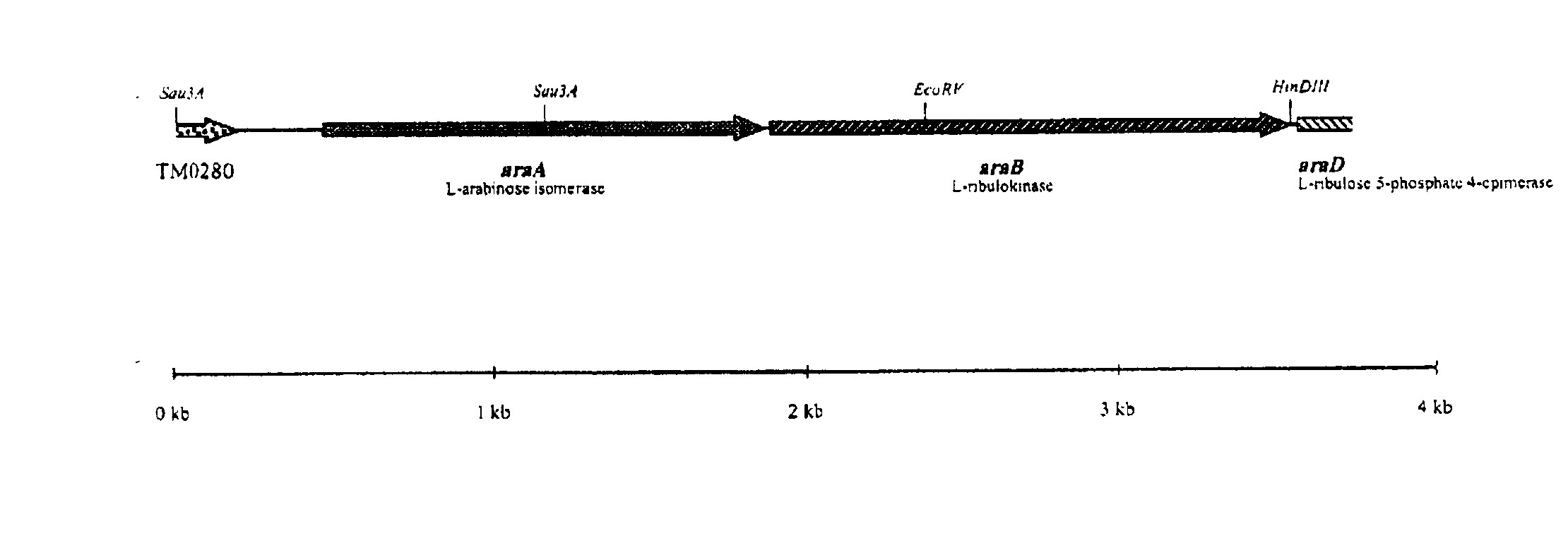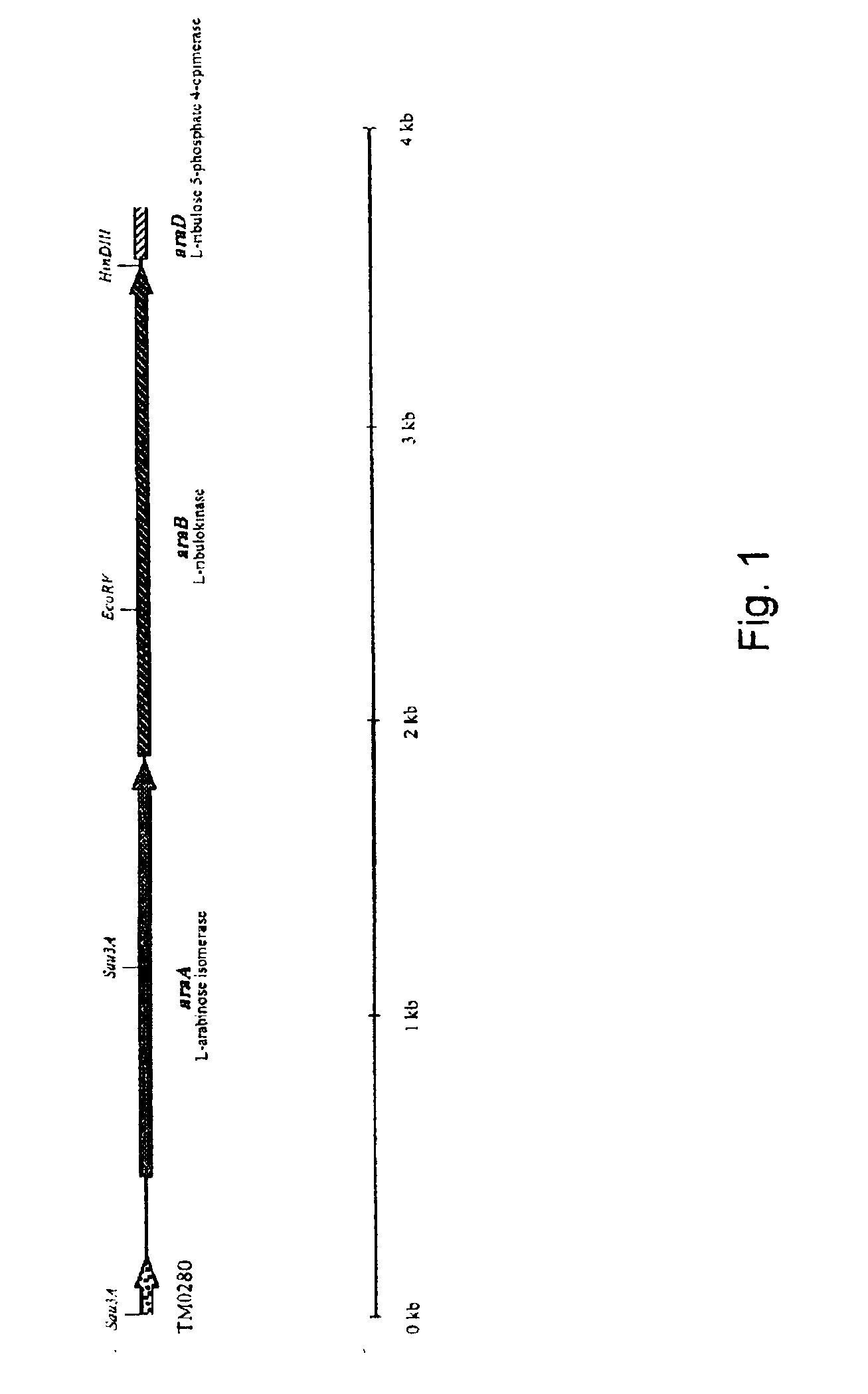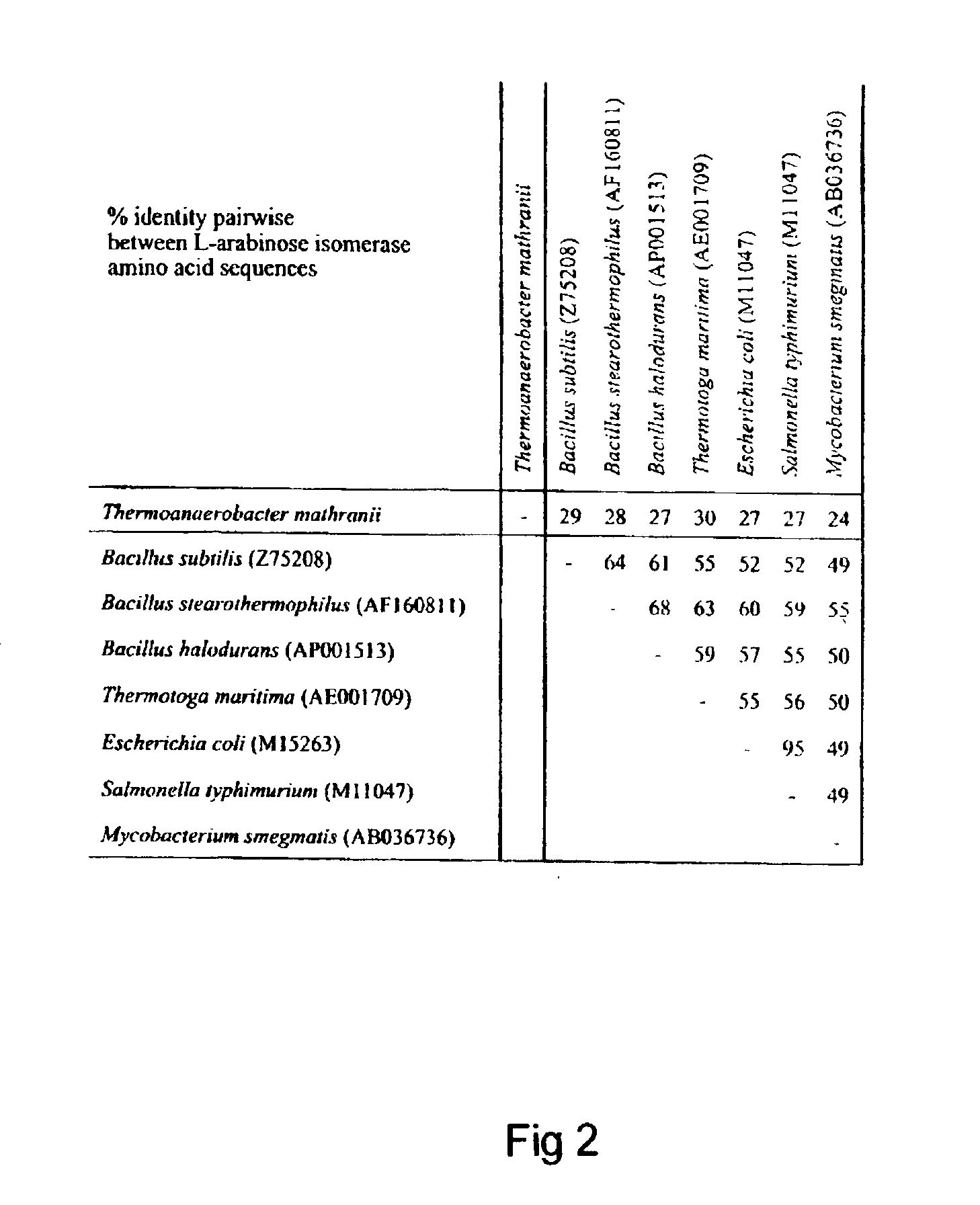Thermostable isomerase and use hereof, in particular for producing tagatose
a technology which is applied in the field of thermodynamic isomerase and enzymes for synthesis of sugars, can solve the problems that the enzymatic method for producing tagatose has not been used commercially
- Summary
- Abstract
- Description
- Claims
- Application Information
AI Technical Summary
Benefits of technology
Problems solved by technology
Method used
Image
Examples
example 1
Cloning of the L-arabinose Isomerase Gene (araA) from Thermoanaerobacter mathranii and Heterologous Production of the Enzyme in E. coli
[0076]The anaerobic, thermophilic microorganism Thermoanaerobacter mathranii DSMZ 11426 was obtained from Deutsche Sammlung von Mikroorganismen und Zellkulturen GmbH, Mascheroder Weg 1b, D-38124 Braunschweig, Germany (DSMZ). Originally, the strain was described as “strain A3” (Sonne-Hansen, J., Mathrani, I. M. and Ahring, B. K. (1993) Appl. Microbiol. Biotechnol. 38: 537-541). Later, the strain was deposited at DSMZ and the name T. mathranii was proposed (Larsen, L., Nielsen, P. and Ahring, B. (1997) Arch. Microbiol. 168: 114-119).
1.1. Growth of T. mathranii
[0077]T. mathranii (DSMZ 11426) was cultivated at 65° C. under anaerobic conditions in the medium recommended by DSMZ. After growth, the culture was centrifuged and the pellet was stored at −80° C. until purification of chromosomal DNA.
[0078]A standard phenol / chloroform extracti...
example 2
Characterisation of L-arabinose Isomerase from T. mathrani Produced in E. coli
5 2.1. Assay Method
[0088]L-arabinose isomerase activity was determined as described by Yamanaka, K. and Wood, W. A. (1966) Methods in Enzymology 9: 596-602. Enzyme sample, 10-50 μl, was mixed with 950 μl of assay reagent and incubated at 65° C. for 60 min. The final concentrations were: L-arabinose, 5 mM; MnCl2, 5 mM; maleate buffer, pH 6.9, 25 mM. When galactose or fucose was used as a substrate, the concentration of D-galactose or D-fucose was 0.5 M and the incubation time was about 16 h.
[0089]The obtained concentrations of the ketoses L-ribulose, D-tagatose or D-fuculose, respectively, were determined by the cysteine-carbazol-sulfuric acid method (Dische, Z. and Borenfreund, E. (1951) J. Biol. Chem. 192: 583-587). Samples were incubated at room temperature for 60 min and the absorbance at 560 nm was measured in a microplate reader. Standard curves showing the colour response of 0-5 mM ketose were made ...
example 3
Bioconversion of D-galactose to D-tagatose with Immobilised Enzyme
3.1 Enzyme Immobilisation by Cross-linking with Glutaraldehyde and Polyethylenimine
[0113]Cells from a 2-liter culture of E. coli cells producing L-arabinose isomerase were collected by centrifugation and homogenised in a French Pressure Cell as described above. The enzyme was immobilised by cross-linking all cell components with glutaraldehyde and polyethylenimine as described in U.S. Pat. No. 4,355,105. Glutaraldehyde, 25% (w / v), was obtained from Merck, Darmstadt, Germany and polyethylenimine, 50% (w / v), was obtained from Sigma Chemicals. The cross-linked enzyme was recovered by centrifugation, and the pellet was lyophilised and stored at 4° C. until further use.
[0114]The activity of the immobilised enzyme was determined by incubation of 20 mg of freeze-dried enzyme in a one-ml assay mixture containing 0.30 g of D-galactose (30%, 1.67 M), 25 mM maleate buffer, pH 6.9 and 5 mM MnCl2 at 65° C. A control sample without...
PUM
| Property | Measurement | Unit |
|---|---|---|
| temperature | aaaaa | aaaaa |
| pH | aaaaa | aaaaa |
| temperature | aaaaa | aaaaa |
Abstract
Description
Claims
Application Information
 Login to View More
Login to View More - R&D
- Intellectual Property
- Life Sciences
- Materials
- Tech Scout
- Unparalleled Data Quality
- Higher Quality Content
- 60% Fewer Hallucinations
Browse by: Latest US Patents, China's latest patents, Technical Efficacy Thesaurus, Application Domain, Technology Topic, Popular Technical Reports.
© 2025 PatSnap. All rights reserved.Legal|Privacy policy|Modern Slavery Act Transparency Statement|Sitemap|About US| Contact US: help@patsnap.com



